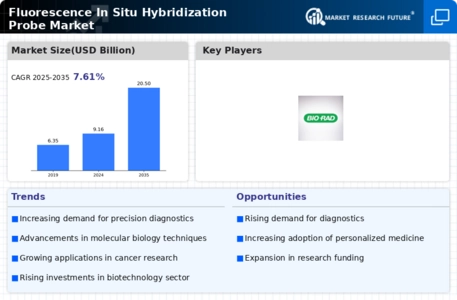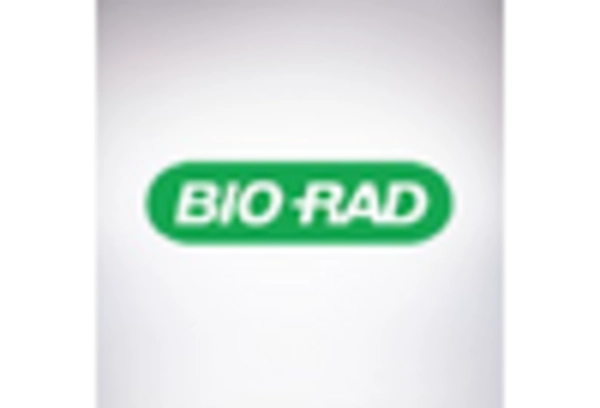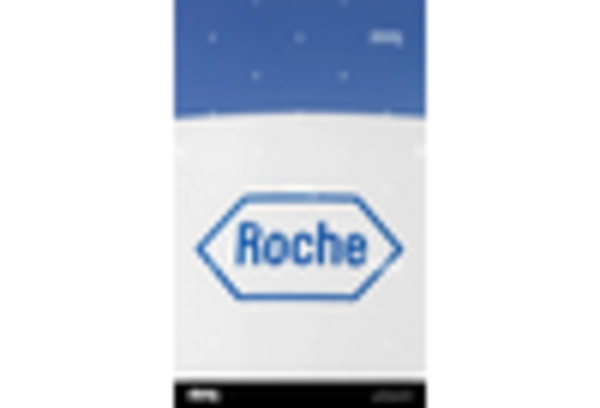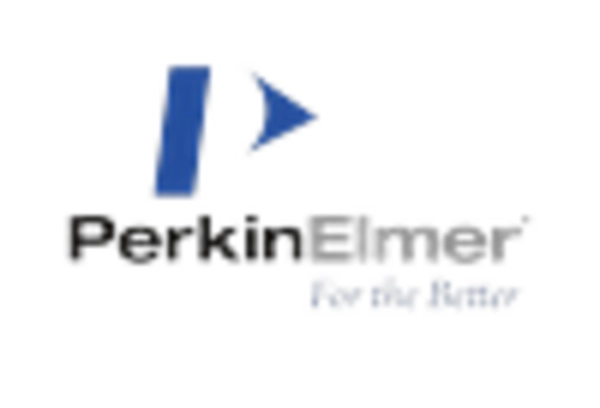Growing Applications in Oncology
The Fluorescence In Situ Hybridization Probe Market is significantly influenced by the expanding applications of FISH in oncology. As cancer research progresses, the utilization of FISH probes for detecting chromosomal abnormalities and gene fusions is becoming increasingly prevalent. This method provides critical insights into tumor biology, aiding in the development of targeted therapies. The oncology segment is projected to account for a substantial share of the FISH market, with estimates indicating that it could represent over 60% of total sales by 2026. The rising incidence of cancer globally further underscores the importance of FISH probes in diagnostic and therapeutic contexts.
Rising Incidence of Genetic Disorders
The Fluorescence In Situ Hybridization Probe Market is also driven by the rising incidence of genetic disorders. As awareness of genetic conditions increases, there is a growing demand for diagnostic tools that can accurately identify chromosomal abnormalities. FISH probes are particularly effective in diagnosing various genetic disorders, including Down syndrome and other aneuploidies. The market is likely to see a surge in demand as healthcare providers seek reliable methods for early detection and diagnosis. Estimates suggest that the prevalence of genetic disorders could lead to a market growth rate of approximately 9% annually, reflecting the urgent need for effective diagnostic solutions.
Increased Funding for Genomic Research
The Fluorescence In Situ Hybridization Probe Market is benefiting from increased funding directed towards genomic research. Governments and private organizations are investing significantly in genomics, recognizing its potential to revolutionize healthcare. This influx of capital is likely to enhance research and development efforts, leading to the creation of more advanced FISH probes. Additionally, funding initiatives are fostering collaborations between academic institutions and industry players, which may accelerate the translation of research findings into clinical applications. As a result, the market for FISH probes is expected to expand, with projections indicating a potential growth rate of around 8% in the coming years.
Rising Demand for Personalized Medicine
The increasing emphasis on personalized medicine is a pivotal driver for the Fluorescence In Situ Hybridization Probe Market. As healthcare shifts towards tailored treatment approaches, the need for precise diagnostic tools becomes paramount. FISH probes play a crucial role in identifying genetic abnormalities that inform treatment decisions, particularly in oncology. The market is witnessing a notable increase in the adoption of FISH techniques for patient stratification and monitoring therapeutic responses. This trend is expected to propel the market forward, with estimates suggesting that the demand for FISH probes could rise by over 10% annually as healthcare providers seek to implement more individualized treatment plans.
Technological Advancements in FISH Probes
The Fluorescence In Situ Hybridization Probe Market is experiencing a surge in technological advancements that enhance the efficacy and precision of FISH probes. Innovations in probe design, such as the development of more specific and sensitive probes, are likely to improve diagnostic accuracy. Furthermore, advancements in imaging technologies, including high-resolution microscopy and automated imaging systems, facilitate the analysis of FISH results. These improvements not only streamline laboratory workflows but also increase the throughput of tests, thereby meeting the rising demand for rapid diagnostics. The market for FISH probes is projected to grow at a compound annual growth rate of approximately 7% over the next few years, driven by these technological enhancements.


















Leave a Comment